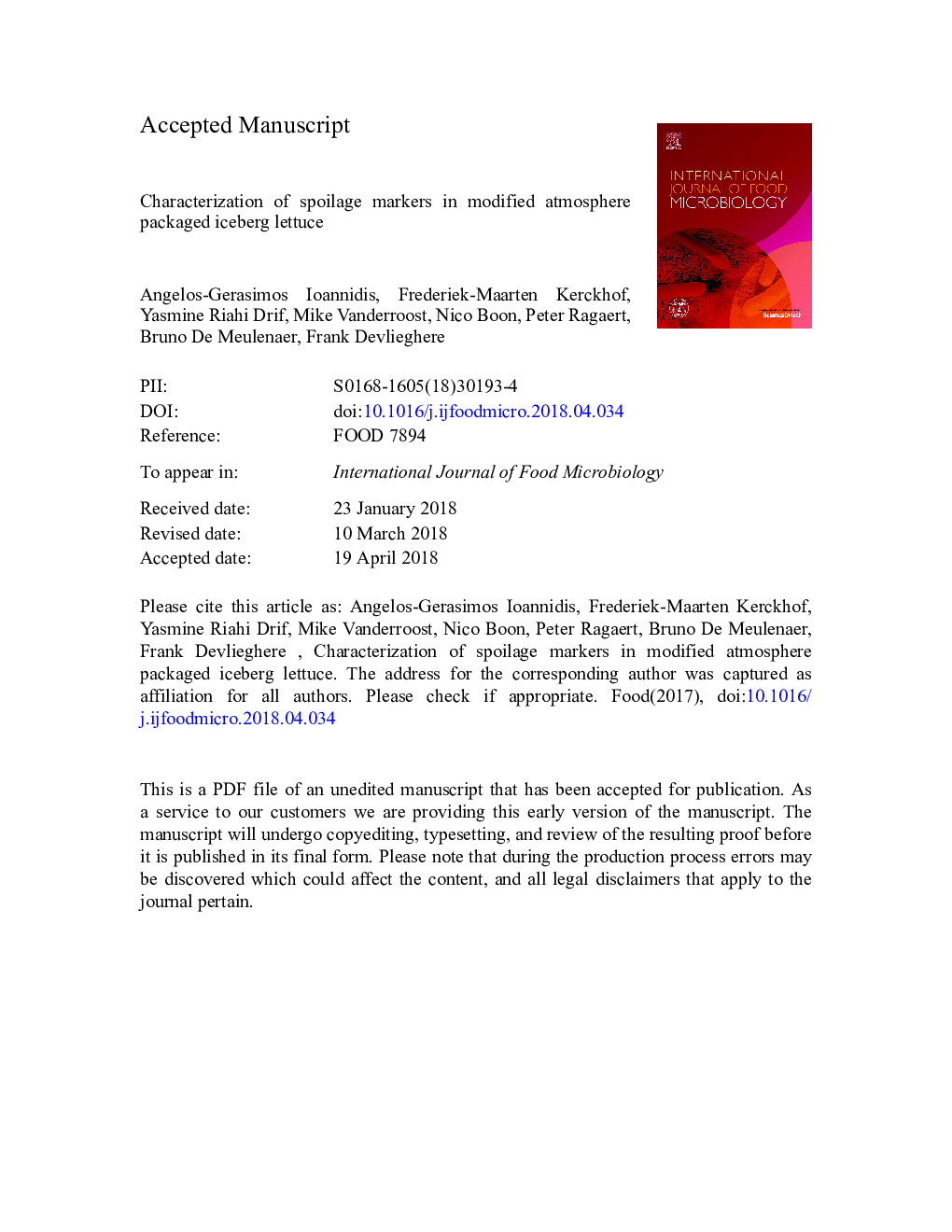| Article ID | Journal | Published Year | Pages | File Type |
|---|---|---|---|---|
| 8844150 | International Journal of Food Microbiology | 2018 | 48 Pages |
Abstract
Results indicated a clear distinction between packaging conditions. EMAP and AIR resulted in a short shelf life (â¤5.6â¯days) which was limited due to browning, leading to consumer rejection as assessed via the Weibull hazard analysis method, while no off-odors were detected. Culture- independent 16â¯s rRNA gene amplicon sequencing revealed Pseudomonas spp. as the dominating species. In contrast, under ANAER conditions, lactic acid bacteria dominated with genera of Leuconostoc spp. and Lactococcus spp. proliferating, while also oligotypes of Pseudomonas spp. were found. Spoilage under ANAER occurred after 6.6â¯days and it was related to strong fermentative-like off-odors that were present by the end of storage. As revealed by selective ion flow tube mass spectrometry (SIFT-MS), these odors were associated with several VOCs such as: ethanol, 3-methyl-1-butanol, 2,3-butanediol, (Z)-3-hexen-1-ol, hexanal, acetic acid, ethyl acetate and dimethyl sulfide. Panelists rejected the iceberg lettuce due to the formation of off-odors while the overall appearance remained good throughout the study. Hence a sensor based technology incorporated in the packaging, detecting VOCs and in particular ethanol as dominant compound, could serve as a spoilage indicator for ANAER packed lettuce, which proved to have the longest shelf life.
Keywords
Related Topics
Life Sciences
Agricultural and Biological Sciences
Food Science
Authors
Angelos-Gerasimos Ioannidis, Frederiek-Maarten Kerckhof, Yasmine Riahi Drif, Mike Vanderroost, Nico Boon, Peter Ragaert, Bruno De Meulenaer, Frank Devlieghere,
